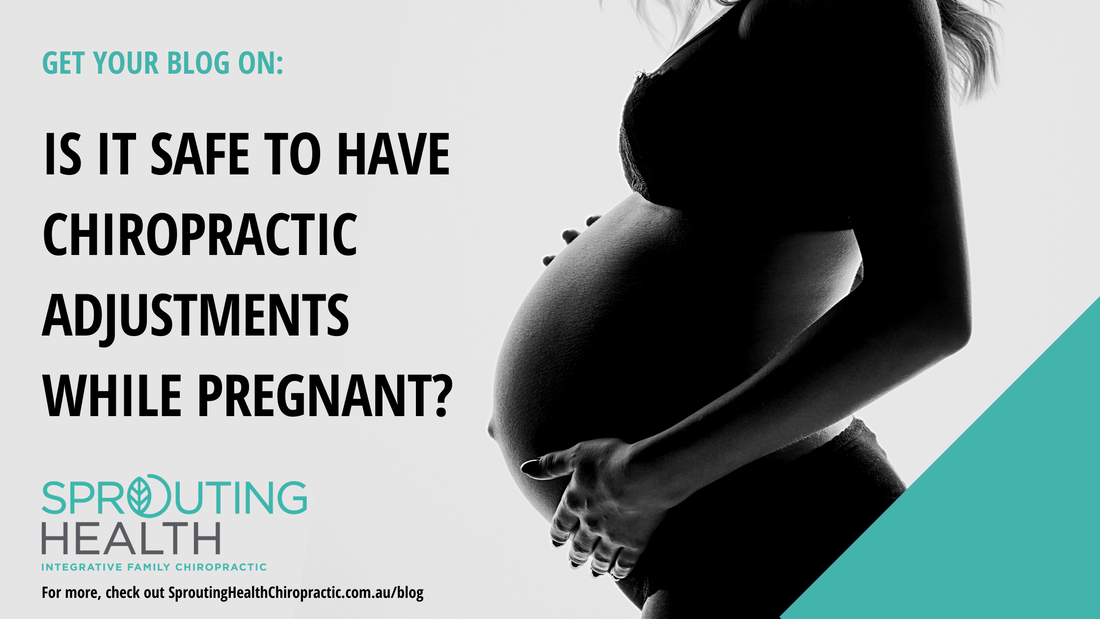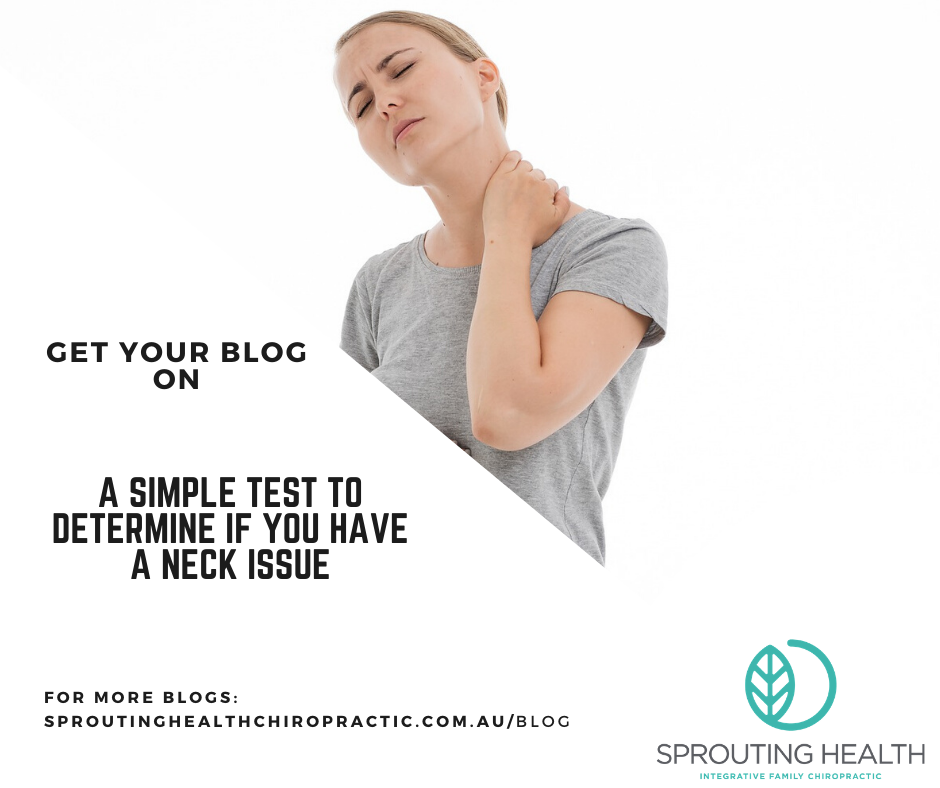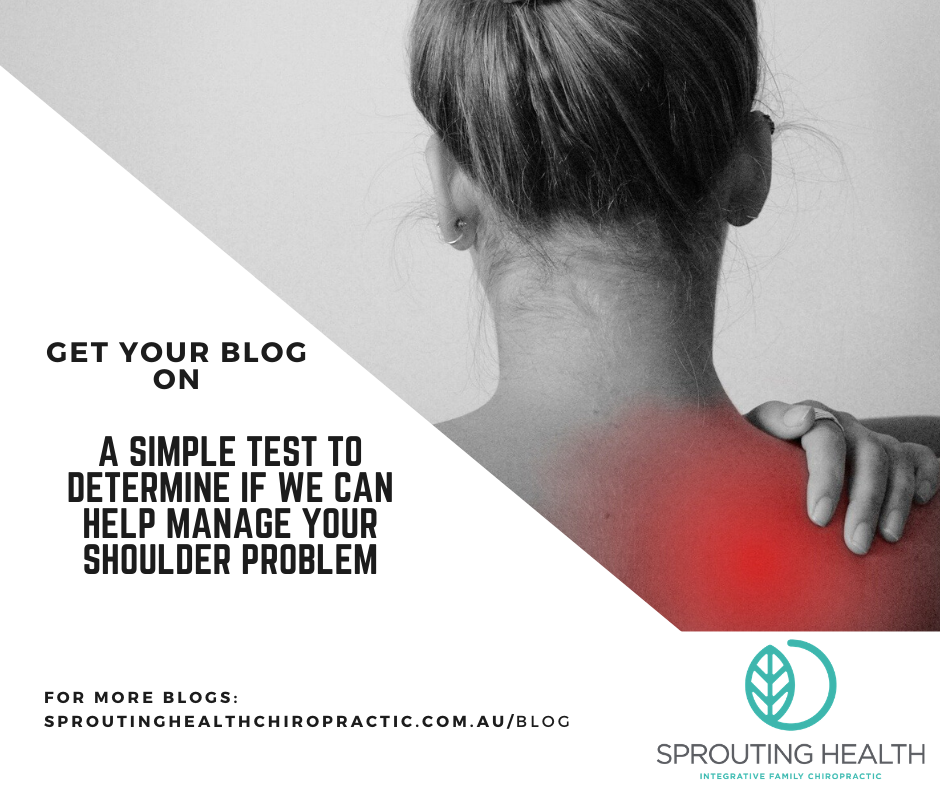|
When people think of chiropractors, they tend to think about our work on the spine. But did you know that we work on ALL the joints of the body? Yep, that’s right, from your head all the way down to your toes. We find that this whole-body approach is extremely important in helping you reach your full potential. And this is even more important with our little sprouts. Our clinical examination of children includes checking for dysfunctional movements of their arms and legs as well as their spine. A recent study done in Melbourne on 202 cases of neonates and infants under the age of 12 months found 153 cases had extremity dysfunction, with 177 instances present (1). Over 70% of these were the shoulder, followed by the wrist (5%), knee (5%), and elbow (2.5%). The majority of shoulder dysfunction was found on the right side. This has been suggested to be caused when the shoulder girdle (being the widest part) is passing through the pelvic outlet during the birthing process (2). Other causes have been listed as, in utero positioning of the baby, and post-natal. So, what is the big deal then? Well, the problem comes down to something we have talked to you all recently about, proprioception; how well can the brain see/feel what your body is doing. A recent study has shown that peripheral joint dysfunction will alter the proprioceptive feed back to the brain in as little as 10 hours (3). This was reversed by correcting the joint dysfunction. This tells us that if we find joints in our arms or legs that are not moving properly, it can impact on our ability to use them properly. This is important when we think of our little ones when they are learning things that we may take for granted, such as; crawling, walking, or even feeding ourselves. References
0 Comments
 We often get asked this in our practice and while we tailor our management and treatment specifically to every patient including babies, toddlers, children, adolescents, adults, the elderly and pregnant mums of all gestational ages, studies have confirmed that chiropractic care is safe for both mum and babies during pregnancy[1],[2]. Many changes are occurring in pregnant mums as they are growing their baby and can include many physical changes, hormonal changes and emotional stressors. Aside from that, approximately 75% of pregnant mum’s report suffering from back or pelvic pain[3]. One study on 115 pregnant women found that there was a 70% improvement in pain within 1 month of being under chiropractic care[4]. Chiropractic adjustments also help relax pelvic floor muscle at rest which may also help increase the likelihood of having a natural vaginal delivery. Another study conducted showed that new mums experienced on average a 25% reduction in labour time when under chiropractic care through pregnancy and this rose to 31% reduction in labour time for mothers who were under care and also given birth previously[5]. However, these were small studies and require further investigation. So if you are pregnant or know somebody who is that is experiencing back or pelvic pain, we would love to see if we can help in managing their pain and help them enjoy the magical experience of their pregnancy and birth. REFERENCES
[1] Stuber, K. J., Wynd, S., & Weis, C. A. (2012). Adverse events from spinal manipulation in the pregnant and postpartum periods: a critical review of the literature. Chiropractic & manual therapies, 20, 8. https://doi.org/10.1186/2045-709X-20-8 [2] Borggren C. L. (2007). Pregnancy and chiropractic: a narrative review of the literature. Journal of chiropractic medicine, 6(2), 70–74. https://doi.org/10.1016/j.jcme.2007.04.004 [3] Malmqvist, S., Kjaermann, I., Andersen, K., Økland, I., Brønnick, K., & Larsen, J. P. (2012). Prevalence of low back and pelvic pain during pregnancy in a Norwegian population. Journal of manipulative and physiological therapeutics, 35(4), 272-278. [4] Peterson, C. K., Mühlemann, D., & Humphreys, B. K. (2014). Outcomes of pregnant patients with low back pain undergoing chiropractic treatment: a prospective cohort study with short term, medium term and 1 year follow-up. Chiropractic & manual therapies, 22(1), 15. [5] Borggren, C. L. (2007). Pregnancy and chiropractic: a narrative review of the literature. Journal of chiropractic medicine, 6(2), 70-74.  We get a lot of people visiting our practice due to Neck Pain. Neck pain is commonly debilitating and often you struggle to do the things you love. Sleeping comfortably, getting out of bed or simply moving around is annoying at best. Neck pain can make you feel cranky and often you will snap at those you love. Correcting your neck pain helps you and often those around you (or at least we are often told). It is hard to know what to do, there seems to be many options….You deserve to live life uninterrupted, feeling great and thinking clearly! Neck pain is very common and has many different causes. Direct causes of mechanical neck pain are rarely identifiable. Most neck issues are functional problems as a result of imbalances in neck support structures. Over time this tends to result in degenerative change that then leads to greater problems with the anatomy itself which can be irreversible depending on presentation. For neck pain, a thorough diagnosis is important to lay the foundation for appropriate treatment and rehabilitation. Neck pain treatment reduces the likelihood of recurrent flare-ups and helps prevent the development of chronic (longer term) issues. There are lots of reasons why you might have neck pain, there are also many different symptoms with neck pain. Here at Little Sprouts Chiropractic (yes we see big sprouts too), we will help identify why you have the pain, then we will develop a game plan specific to you, to help you manage your recovery. We use natural and gentle means to help manage your recovery. Amongst other tests we look at muscle weakness patterns and dermatome or numbness patterns in the arms and hands to help diagnose the problem (1,2). One easy test you can do at home to determine if you have early signs of neck trouble (remember get to the cause before it becomes a big issue) is a simple range of motion test. Data from a scientific study suggests that there are early range changes associated with the development of neck pain (3). If you go through the following ranges: flexion, extension, side band and rotation; and there are ranges that hurt or are restricted, it would be worth getting screened. Another test we use is Spurlings test (4). The Spurling test is a medical maneuver used to assess nerve root pain (also known as radicular pain). WARNING DO NOT do this at home (there are some reasons why you should not do this test - we won’t be discussing here) a trained professional must use this test. The examiner turns the patient's head to the affected side while extending and applying downward pressure to the top of the patient's head. A positive Spurling's sign is when the pain arising in the neck radiates in the direction of the corresponding dermatome (skin supply) on the same side. It is a type of cervical compression test. Patients with a positive Spurling's sign can present with a variety of symptoms, including pain, numbness and weakness. In addition to the clinical history, the neurological examination may show signs suggesting a cervical radiculopathy. This can indicate a disc issue, other symptoms of this are usually numbness into the hands and pain although you may not be experiencing these issues. We are passionate about what being well means, and love seeing you and your family reach maximum potential and experiencing all that life can offer. If you have a neck issue of any sort make sure you get in early and get it properly diagnosed and checked out.  We get a lot of people visiting our practice with Shoulder Pain. For many people with shoulder pain it is hard to know what to do, there seems to be many options…. Read on to check out one simple test to see if you have a problem that we may be able to help manage. Recent studies show that management should focus on prevention and early intervention in shoulder complaints (1). When you have Shoulder pain you feel irritated and frustrated, it is hard to move and pick things up, let alone exercise. It becomes hard to think clearly and to truly enjoy life when your activities are limited.. Yoga, golf, simply picking up a shopping bag or hugging your child becomes difficult!! Recent research has demonstrated the most problematic areas are placing objects on a high shelf, washing one's back and carrying heavy objects (1). The shoulder is the most flexible joint in your body, and given the number of everyday activities it's involved in—from brushing your hair to reaching up into the cupboard—it's easy to see why shoulder pain is something you'd want to get to the bottom of right away. Without free movement, often you struggle to do the things you love. Your shoulder joints move every time you move your arms. These bones are held together by muscles, tendons, and ligaments. The shoulder joint has the greatest range of motion of any joint in the body. Because of this mobility, the shoulder is more likely to be injured or cause problems. The acromioclavicular (AC) joint, which lies over the top of the shoulder, is also easily injured. There are many different types of Shoulder Issues and most are diagnosed by history and presenting factors. There are lots of reasons why you might have shoulder pain, there are also many different symptoms with shoulder pain. Here at Sprouting Health Chiropractic we will help identify why you have the pain, then we will develop a game plan specific to you, to help you manage your recovery. We isolate the major muscles and do very specific strength testing on these muscles to ascertain where the problem is. We also do stability tests and range of motion testing to work out if the shoulder problem is stemming from somewhere else (eg the neck). We then go about balancing the joints that support the shoulder and the shoulder joint itself. We use natural and gentle means to help manage your recovery. Here is a simple tests you can do with someone else to see if we might be able to help manage your shoulder. It is called speeds test. Speeds test is traditionally used to detect an injury to the long head of the biceps (1). We also use a modified form of this test to determine if there is scapular (shoulder blade) instability. Simple stand with your arm outstretched in front of your body with your palm up. Have someone push gently down on the arm just above the wrist. If the arm can hold against the pressure the test is a pass. If the arm cannot hold against resistance (or there is pain) there is a good chance you have either a biceps issue or scapular instability. This can indicate irritation or injury to the suprascapular nerve. A mechanism of suprascapular nerve injury is traction (2), this happens when there is scapular instability. Mechanical stretching of the nerve will weaken certain muscles (we check for these) and this can cause shoulder issues and pain. If this is the case we can help out with you management. There are lots of other causes of issues and we will screen for these. References
|
AuthorBlogs by the team at Sprouting Health Archives
July 2024
Categories |


 RSS Feed
RSS Feed
